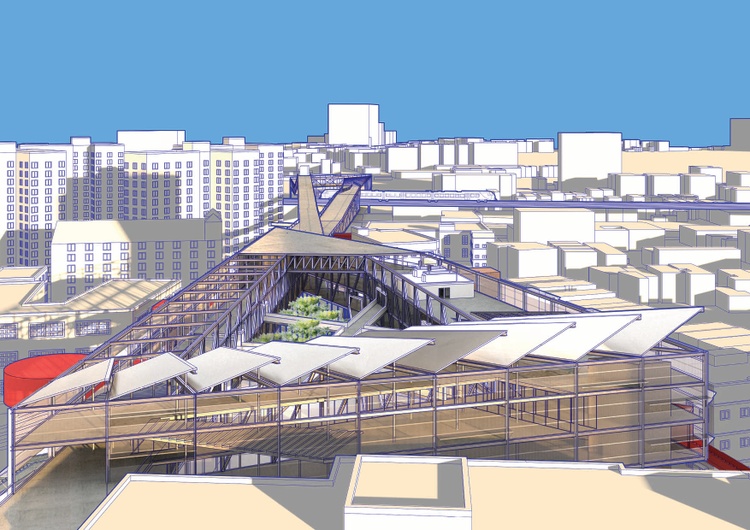The Creative Refine Behind Effective Projects from CDA Architects
The Creative Refine Behind Effective Projects from CDA Architects
Blog Article
An Extensive Introduction of Architectural Designs and Their Impact on Modern City Planning and Advancement
Architectural designs have actually long served as a mirror to the societal worths and technological advancements of their time, playing an essential function in forming modern-day city preparation and advancement. From the splendour of Neoclassicism to the practical approach of Brutalism, each style has actually presented distinct concepts that affect urban visual appeals and performance.
Historic Review of Architectural Styles

As cultures transitioned through the Center Ages, Gothic design emerged, defined by its verticality and complex describing, matching the spiritual ambitions of the age. The Renaissance noted a revival of classic perfects, combining art and design in cutting-edge methods that influenced succeeding styles across Europe.

Today, architectural designs remain to progress, driven by globalization and sustainability issues, showing a vibrant interplay in between heritage and innovation. This historic overview highlights the relevance of architecture as a mirror of social development and as a driver for metropolitan development.
Secret Architectural Styles Explained
The diversity of building designs reflects the myriad impacts that form our built atmosphere, each embodying distinctive characteristics and cultural values. Key building styles include Classic, Gothic, Baroque, Modernism, and Postmodernism, each representing one-of-a-kind historical contexts and visual approaches.
Timeless style, rooted in old Greece and Rome, highlights balance, percentage, and making use of columns (cda architects). On the other hand, Gothic style, thriving in the center Ages, is identified by pointed arcs, ribbed safes, and flying buttresses, producing an aerial top quality in sanctuaries. Baroque design, arising in the 17th century, is noted by majesty, sophisticated ornamentation, and a dynamic interaction of light and darkness
Modernism, which acquired energy in the very early 20th century, focuses on feature over form, utilizing new products like steel and glass to develop minimalist structures. Postmodernism, reacting versus the austerity of Innovation, accepts eclecticism and historical referral, frequently including playful elements and irony.

Effect on Urban Preparation
In shaping the growth of cities, building designs dramatically affect urban planning choices. The choice of architectural style frequently dictates the appearances, functionality, and overall character of pop over to this web-site urban atmospheres.
In addition, building styles can affect zoning laws and land utilize policies. Urban coordinators should consider the prevailing building patterns when making areas, making sure that new developments integrate with existing structures. This consideration fosters cohesive metropolitan landscapes and improves area identity.
The application of certain architectural designs can additionally influence socioeconomic variables within a city. Premium modern styles might attract upscale homeowners and organizations, leading to gentrification, while more economical real estate services could prioritize sensible and lasting layouts to fit diverse populations. cda architects. Inevitably, the interplay in between architectural styles and city planning develops dynamic cities that show both historic context and modern requirements, shaping the lived experiences of their inhabitants
Sustainability and Modern Design
Architectural designs play a pivotal role in attending to modern difficulties, specifically in the realm of sustainability. As city areas increase and ecological worries magnify, contemporary design significantly accepts sustainable style principles that focus on energy efficiency, source conservation, and minimal ecological effect.
Contemporary architectural motions, such as biophilic design and eco-friendly style, supporter for structures that harmonize with their surroundings, making use of natural products and advertising biodiversity. These styles often incorporate renewable resource sources, such as solar panels and wind generators, to minimize reliance on nonrenewable fuel sources and reduced carbon impacts.
Moreover, the assimilation of innovative technologies, such as smart structure systems, enhances energy management, maximizing resource usage while making certain resident convenience. Ingenious water administration methods, consisting of rain harvesting and greywater recycling, additional contribute to lasting city environments.
Notably, sustainability prolongs past environmental issues; it encompasses social and financial measurements. By promoting community wellness and advertising inclusivity, contemporary architectural styles line up with sustainable development objectives. Subsequently, the advancement of architectural techniques proceeds to form resilient cities that not just fulfill the demands of the here and now yet likewise safeguard the future for generations to come.
Community Involvement in Layout
Area engagement in design functions as an important bridge in between architects and the populaces they offer, making certain that the constructed setting mirrors the requirements and goals of its individuals. This collective procedure welcomes community members to add their insights and choices, promoting a feeling of possession and responsibility towards the rooms they live in.
Efficient neighborhood involvement uses various methods, such as workshops, studies, and public discussion forums, to collect varied point of views. These techniques assist in a two-way learn this here now discussion, permitting designers to recognize local contexts while encouraging citizens to voice their worries and desires. This inclusivity not just improves the layout quality but likewise advertises social equity by attending to the special challenges encountered by marginalized teams.
Furthermore, area engagement can cause cutting-edge remedies that may not emerge in a typical layout process. By incorporating regional understanding and social worths, architects can develop areas that reverberate even more deeply with customers, boosting use and sustainability. Ultimately, focusing on community engagement in style procedures results in settings that support social communications, assistance well-being, and reinforce community connections, thus playing a pivotal role in shaping contemporary metropolitan landscapes.
Verdict
Building designs have profoundly affected contemporary city preparation and development, showing advancing social why not try here and technical contexts. The assimilation of historic appearances with contemporary needs cultivates urban atmospheres that prioritize sustainability and area involvement. As cities remain to expand and adapt, the ongoing discussion in between architectural heritage and modern-day design concepts will continue to be crucial in creating inclusive, vivid areas that enhance high quality of life and promote social equity. The future of city growth rest on this unified balance.
Report this page